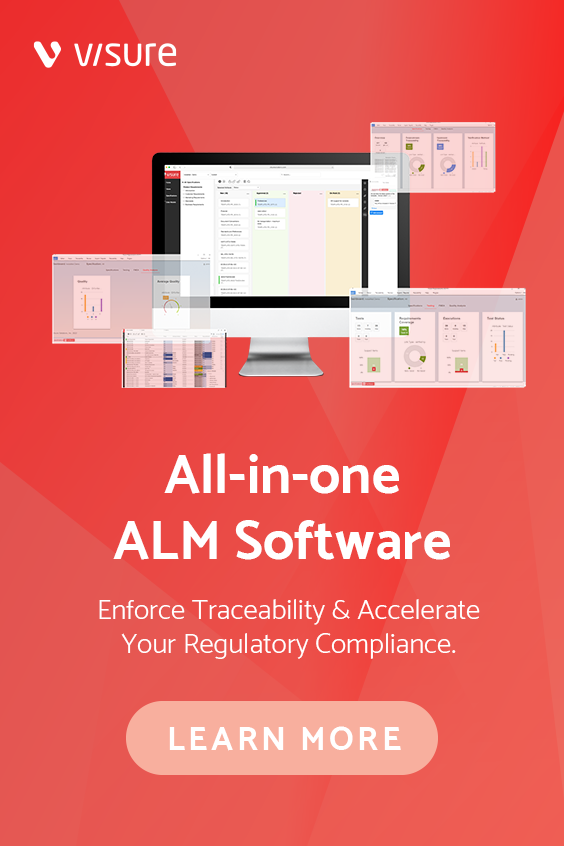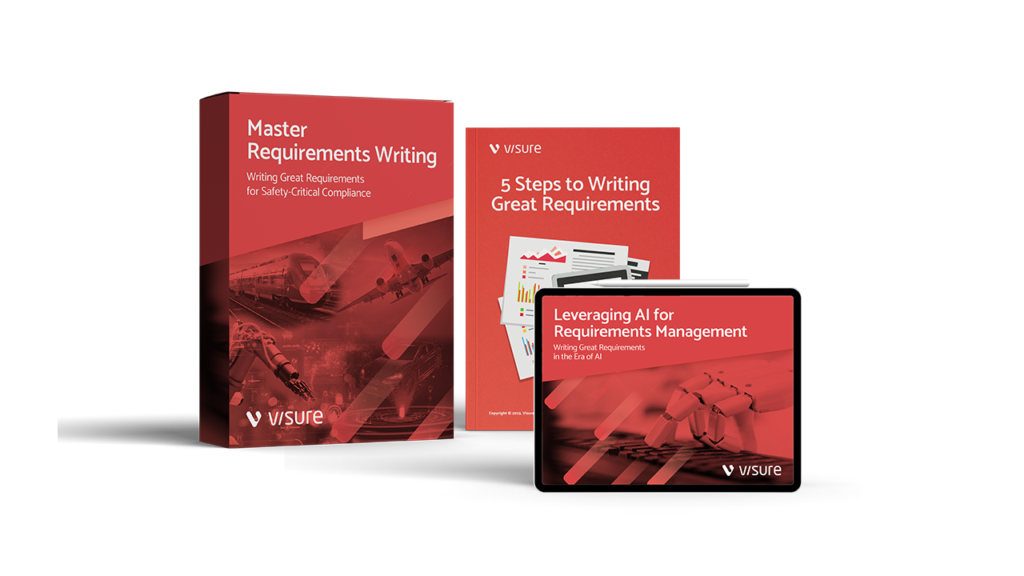In industries where safety and regulatory compliance are paramount, such as aerospace, automotive, and healthcare, meeting certification standards like DO-178C, ISO 26262, and IEC 61508 is a rigorous and often lengthy process. One of the key components of achieving certification is requirements traceability, which ensures that all system requirements are verified and validated through tests. AI-driven requirements traceability offers an innovative solution to streamline the process, making it faster, more accurate, and less prone to errors. This article explores how AI technology is transforming requirements traceability, improving testing efficiency, and accelerating the certification process.
What is AI-driven Requirements Traceability?
The Importance of Requirements Traceability
Requirements traceability refers to the ability to track and link each system requirement to its corresponding design, implementation, and test activities. It is essential to demonstrate that every requirement has been verified and validated in accordance with regulatory standards. For example, DO-178C certification requires comprehensive verification to ensure that software meets safety-critical criteria, making traceability a vital component of the certification process.
How AI Enhances Traceability?
Traditional requirements traceability methods involve manual processes, spreadsheets, and fragmented tools that are time-consuming and prone to human error. AI-driven traceability automates the process of linking requirements to tests, creating dynamic traceability matrices, and generating compliance reports. By leveraging AI algorithms, organizations can ensure complete traceability across the entire development lifecycle, from requirements definition to testing and certification.
Benefits of AI-Driven Requirements Traceability
- Faster Testing and Certification – One of the main benefits of AI-driven traceability is the significant reduction in time required to complete testing and certification. AI tools automatically create traceability links, ensuring that all requirements are linked to corresponding tests without the need for manual intervention. This automation not only speeds up the process but also minimizes the risk of human error, which can lead to certification delays.
- Enhanced Accuracy and Compliance – AI-driven traceability solutions ensure that traceability matrices are accurate and up-to-date in real time. These tools continuously monitor changes to requirements, tests, and designs, automatically updating the links to reflect the latest information. For industries like aerospace, where compliance with DO-178C is crucial, this level of precision ensures that all necessary requirements are verified and documented, reducing the risk of non-compliance.
- Improved Efficiency – By automating repetitive tasks such as test generation, traceability linking, and compliance reporting, AI-powered tools free up time for engineers to focus on more strategic tasks. This leads to better resource allocation and faster completion of testing activities. With AI, organizations can ensure that they are testing the right requirements with the appropriate tests, avoiding redundancy and improving overall efficiency.
- Cost Savings – The automation provided by AI-driven traceability tools helps organizations reduce manual labor, lowering operational costs. In addition, by catching issues earlier in the development process, AI can help prevent costly rework that often arises from missed traceability links or incomplete test coverage. The result is a more cost-effective approach to testing and certification.
AI-Driven Traceability for DO-178C Certification
Ensuring Compliance with DO-178C
For organizations working toward DO-178C certification, AI-driven traceability is a game changer. The certification requires a rigorous demonstration that all software requirements have been verified and validated through tests. AI tools make it easier to create a complete and accurate traceability matrix, which is essential for proving compliance with the standard. By automating the creation and maintenance of traceability links, AI ensures that all requirements are properly tested and verified, reducing the risk of errors or omissions that could jeopardize certification.
Automating Test Generation and Execution
AI-driven traceability systems not only link requirements to tests but can also automate test generation. Based on the defined requirements, AI tools can create test cases that cover all possible scenarios and edge cases, ensuring comprehensive verification. These tools can then execute the tests, collect results, and update the traceability matrix automatically. This level of automation helps reduce manual effort and ensures that testing is thorough and efficient.
Key Features of AI-Driven Traceability Tools
1. Automated Test Case Generation
AI tools can automatically generate test cases based on system requirements. By analyzing the requirements and identifying testable conditions, AI-driven tools ensure that every requirement is properly tested, without missing any critical edge cases. This automation improves the efficiency of the testing process and accelerates the path to certification.
2. Real-Time Traceability Updates
With AI-driven traceability tools, updates to requirements or tests are automatically reflected in the traceability matrix. This ensures that the traceability links are always current, making it easier to track progress and identify any gaps in testing or verification. Real-time updates help prevent errors and delays, ensuring the timely completion of certification activities.
3. Risk-Based Traceability
AI-driven systems can assess the risk level of different requirements and prioritize testing accordingly. This risk-based approach ensures that high-priority requirements are tested first, speeding up the verification process and ensuring compliance with critical safety standards. By focusing resources on the most important tests, organizations can optimize their testing efforts and reduce certification time.
4. Automated Compliance Reporting
AI-powered traceability systems can generate compliance reports automatically, reducing the manual effort required to produce certification documentation. These reports include detailed traceability matrices, test logs, and verification results, making it easier to demonstrate compliance with standards like DO-178C and ISO 26262. Automated reporting ensures that all necessary documentation is available for certification audits.
How AI-Driven Traceability Support Agile Development and Compliance?
Agile Requirements Engineering and Traceability
In agile development environments, where requirements and tests evolve rapidly, maintaining traceability can be challenging. AI-driven tools support agile requirements engineering by automatically updating traceability links as requirements change. This dynamic traceability ensures that development teams can adapt quickly to new requirements without losing track of previous tests or validation activities.
Accelerating Compliance in Agile Projects
AI-driven traceability tools enable agile teams to stay compliant with regulatory standards by automating the creation and maintenance of traceability links. As new features are developed or requirements change, AI tools automatically adjust the traceability matrix, ensuring that all requirements are linked to tests and verified in real-time. This approach helps agile teams meet compliance requirements without slowing down development cycles.
The Future of AI-Driven Traceability
Integration with CI/CD Pipelines
As the software development process becomes more automated, AI-driven traceability tools will likely integrate with Continuous Integration/Continuous Deployment (CI/CD) pipelines. This integration will allow teams to automatically track requirements, design changes, and test results as part of the development process. With real-time traceability, teams can ensure that their code is always compliant and properly tested, reducing the time to certification.
AI and Machine Learning in Risk-Based Testing
Future advancements in AI and machine learning will enhance the ability to assess the risk of different requirements and prioritize testing accordingly. By analyzing historical test data and failure patterns, AI can continuously improve its risk assessment algorithms, ensuring that critical requirements are tested first, and minimizing the risk of certification delays.
Conclusion
AI-driven requirements traceability is revolutionizing the testing and certification process, particularly in safety-critical industries that require compliance with standards like DO-178C. By automating the creation and maintenance of traceability links, AI-powered tools improve efficiency, accuracy, and compliance, ultimately speeding up the path to certification. As organizations increasingly adopt AI-driven solutions, the future of requirements traceability looks promising, with advancements in risk-based testing, continuous integration, and machine learning further enhancing the speed and reliability of testing and certification processes.
AI is no longer just an option for certification; it’s becoming a necessity for organizations looking to stay competitive in a fast-paced, compliance-driven environment.
Check Out The Free Webinar:
Check out the free on-demand joint webinar where we, with our esteemed partner Rapita Systems, will deep dive into how AI-driven Requirements Traceability can enhance and fasten Testing and Standard Compliance. Discover how to enhance your development process by seamlessly linking requirements to tests, reducing errors, and improving compliance in safety-critical industries.
In this webinar, we’ll cover:
- Generate Requirements in Visure: Learn how to define, manage, and centralize requirements effectively with the Visure Requirements ALM Platform.
- Test Implementation and Execution with RapiTest: Explore efficient methods for implementing and running safety-critical test cases using RapiTest.
- Seamless Integration Between Rapita and Visure: Discover how to streamline workflows by importing test results and reports from Rapita into Visure.
- Run Traceability Analysis Reports in Visure: Uncover Visure’s robust tools for mapping requirements to tests and generating traceability analysis reports.
- Future Trends in Innovation and Compliance: Examine the latest advancements in traceability automation, AI-driven requirements management, and compliance solutions.


